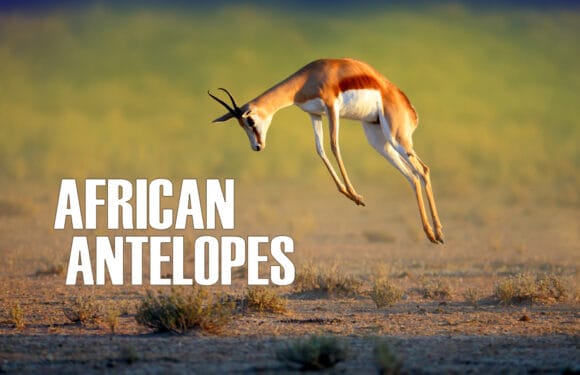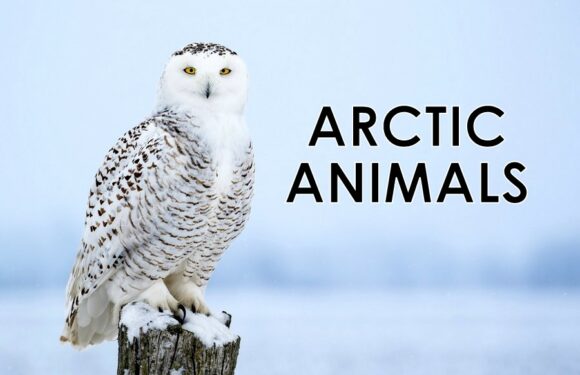
Giraffes, the tallest mammals on Earth, are a common sight on the savannas of Africa.
As Tanzania’s national animal, the giraffe is revered and protected within the country’s borders. The animal represents the ability to be visionary – seeing the past and the present. And so, the giraffe serves as a reminder for Tanzanians to view life from all angles.
Here are 10 facts about giraffes.
1. Not One, But Four Species
Giraffes were once classified as a single species with several subspecies, But evidence revealed revealed significant genetic differences between different giraffe populations, which led to a revision in their classification. There are four recognized species of giraffes and nine subspecies.

- Masai Giraffe (Giraffa tippelskirchi): Known for its jagged-edged spots, the Masai giraffe is found in southern Kenya and Tanzania.
- Southern Giraffe (Giraffa giraffa): This species has two subspecies, the Angolan giraffe and the South African giraffe. It’s characterized by star-shaped patches on a lighter background and is found in southern Africa.
- Northern Giraffe (Giraffa camelopardalis): This species includes three subspecies: the Nubian giraffe, the Kordofan giraffe, and the West African giraffe. They are distributed across different parts of East and West Africa.
- Reticulated Giraffe (Giraffa reticulata): Distinguished by its clearly defined, reticulated pattern of narrow lines, this species is primarily found in northeastern Kenya, southern Ethiopia, and Somalia.
2. Their Spots Are Like Fingerprints

Every giraffe has a unique pattern of spots, much like human fingerprints. These spots, apart from giving them their distinctive look, also help in thermoregulation. The large, irregular patches on their skin are surrounded by a network of blood vessels that aid in releasing excess body heat.
3. Giraffes Are Silent Giants
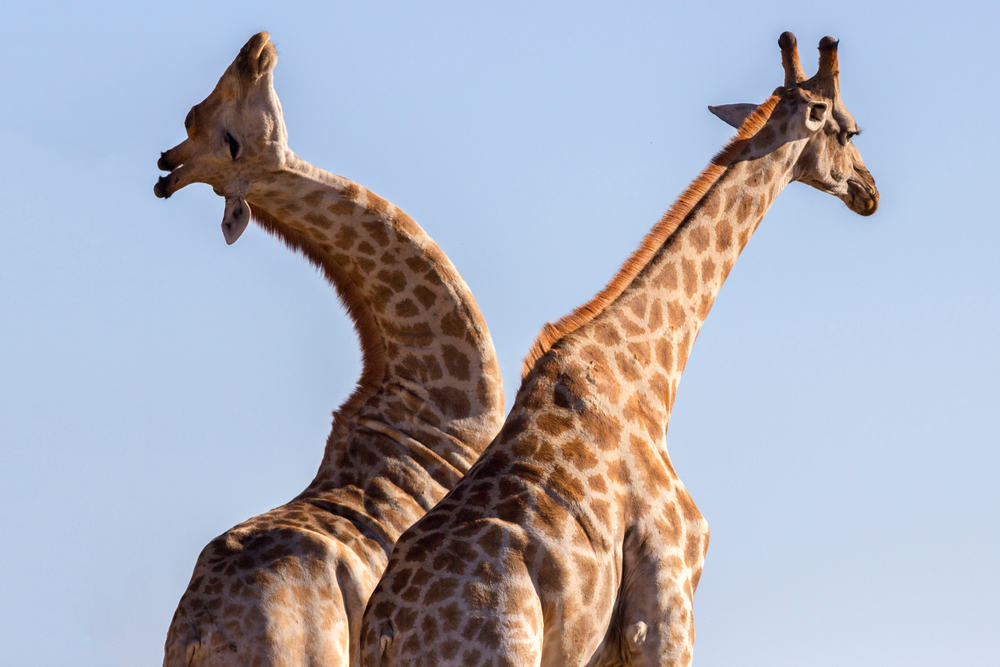
Contrary to popular belief, giraffes are not mute. They use various sounds like moans, snores, hisses, and grunts, especially in social interactions. However, they are generally quiet animals, and much of their communication happens through body language.
4. They Have a Height Advantage

Adult giraffes stand at a staggering height of 14 to 19 feet, with their necks alone being about 6 feet long. This height gives them a significant advantage in reaching leaves and buds in treetops that other herbivores can’t reach. But it becomes a hindrance when they drink water as their necks are too short to reach the ground. Therefore, they have to spread their front legs to take a sip.
5. Giraffes Have Strong Hearts

Giraffes have a highly specialized cardiovascular system to manage blood flow to their brains over the long journey up their necks. Their hearts are incredibly strong and large, about 2 feet long, and weigh around 25 pounds to efficiently pump blood to great heights.
6. They Walk Funny
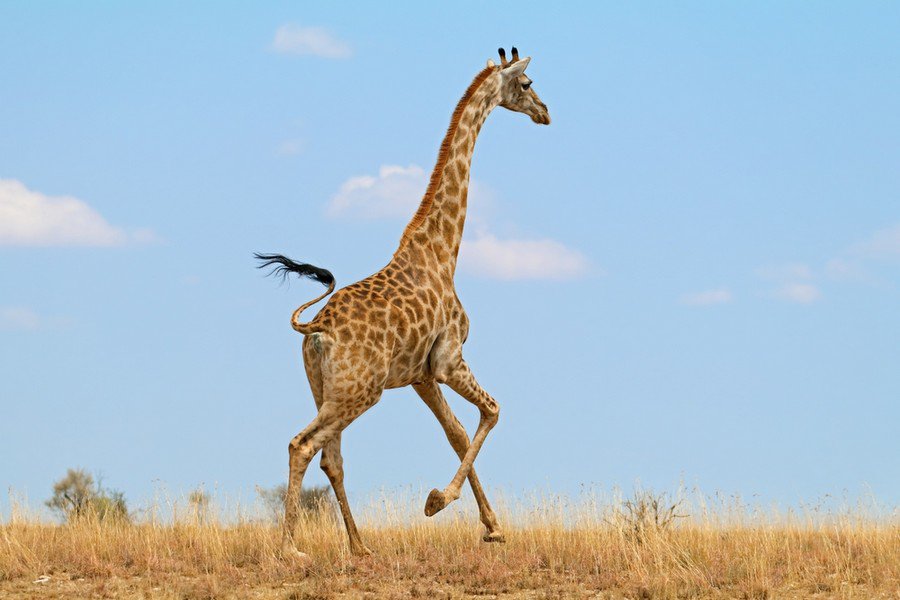
Giraffes move both legs on one side of their body and then both on the other side, which is known as “pacing” gait. This unique way of walking is thought to provide stability and balance, considering their long limbs and neck.
7. Giraffe Tongues Are Specialized
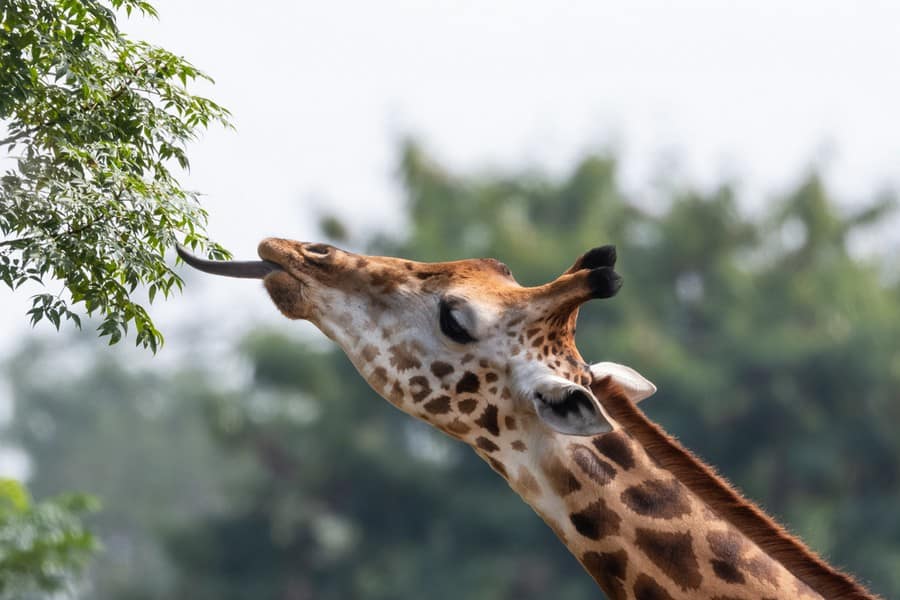
Giraffes primarily feed on the leaves, fruits, and flowers of woody plants, with acacia species being a favorite. Their tongues, which can be up to 18 inches long, help them maneuver around thorns and rugged bark to reach their food.
8. Giraffes Sleep Standing Up
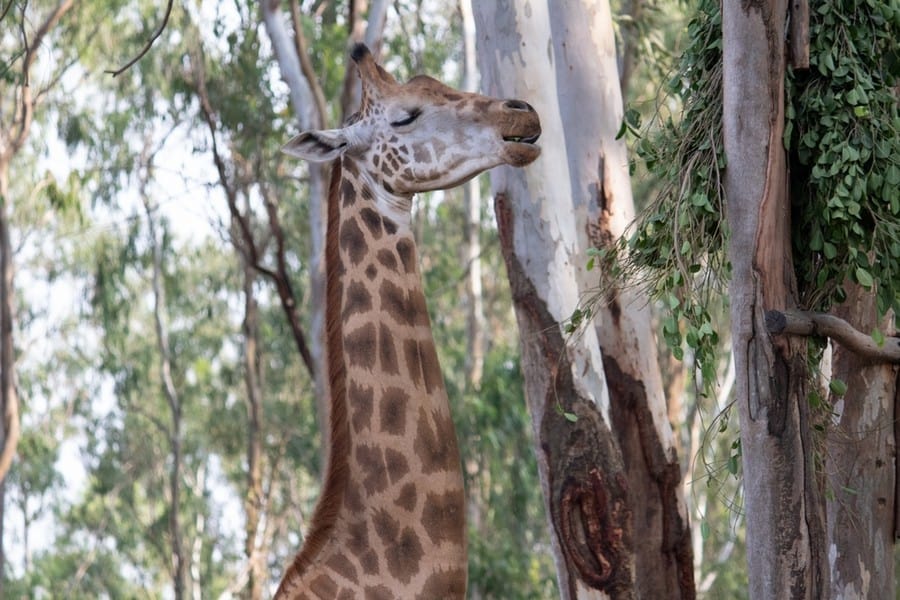
Giraffes usually sleep standing up, which helps them quickly escape from predators if needed. They rarely lie down, and when they do, it’s for a short time. They typically sleep for just a few minutes at a time, adding up to about 30 minutes to 2 hours in a 24-hour period, which is one of the shortest sleep requirements in the animal kingdom.
9. They Group Together in Towers
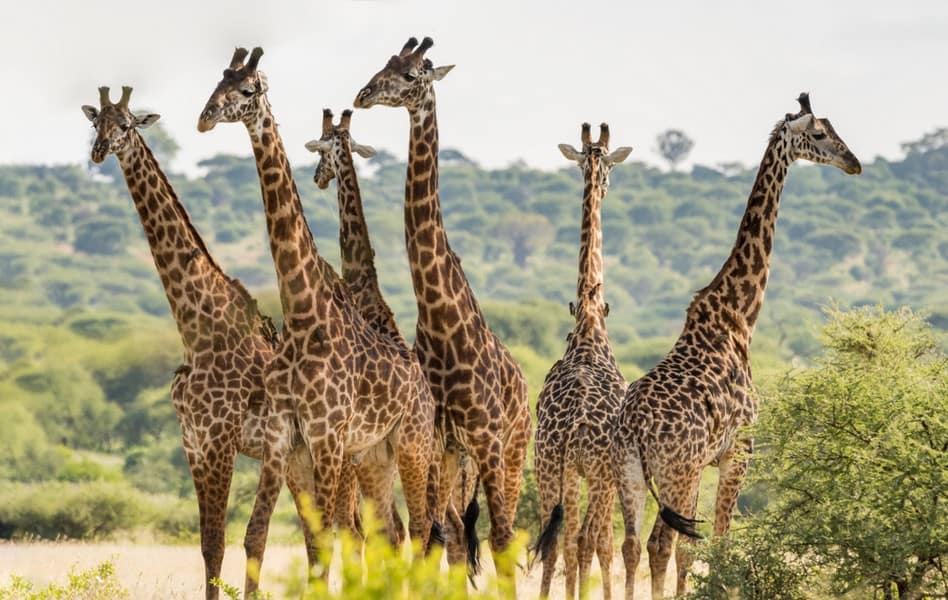
Giraffes are social creatures and are often found in groups, known as towers. These groups are usually casual and members may join or leave freely. Female giraffes often form more stable groups, especially when they are raising young.
10. Giraffes Drop Their Kids
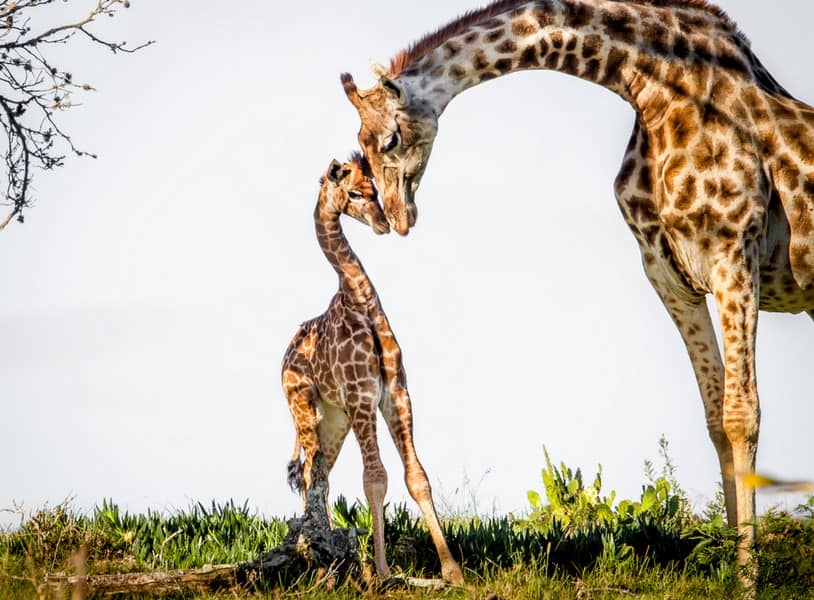
Giraffe pregnancies last for about 15 months. When giving birth, the female giraffe remains standing, so the newborn’s first experience outside the womb is a 6-foot drop to the ground. This fall helps to break the amniotic sac and cut the umbilical cord, and stimulates the newborn to take its first breaths.
11. They Have Strong Kicks
When threatened, a giraffe’s primary form of defense is its powerful legs. A giraffe’s kick can generate enough force to deter most predators, and it has the potential to be lethal. These kicks can be delivered with incredible speed and accuracy, making them a formidable weapon against threats such as lions, the primary predators of giraffes.
12. Giraffes Fight By “Necking”
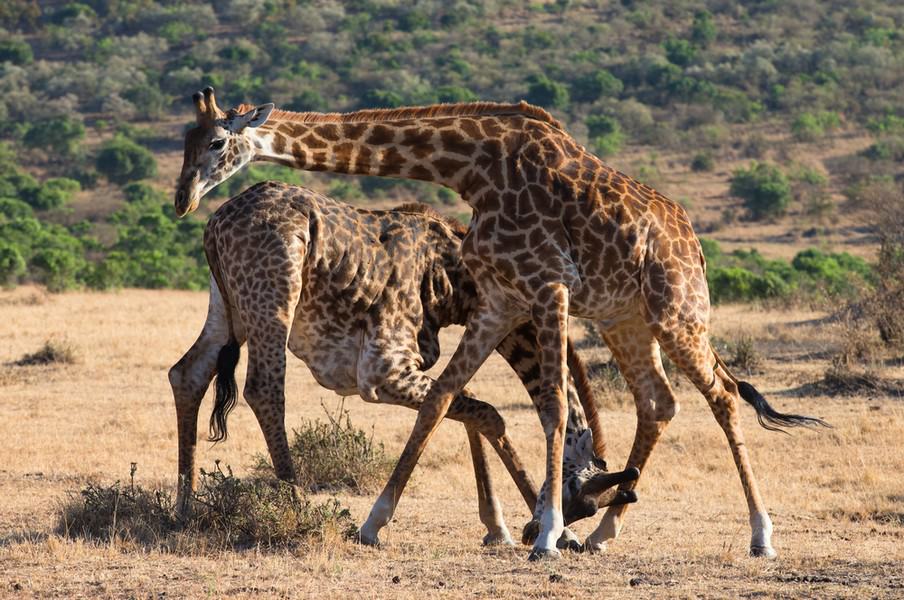
Giraffes have horns known as ossicones. To establish dominance or compete for females, males use their ossicones to engage in combat, called “necking.” During these battles, giraffes swing their long necks, using the weight and momentum to land blows with their heads. The impact can be strong enough to knock an opponent off balance or even cause injury.
Giraffe Quick Facts
- Scientific Name: Giraffa
- Common Name: Giraffe
- Size: Up to 19 feet tall
- Weight: 1,800 – 2,800 pounds
- Lifespan: 20–25 years in the wild
- Diet: Herbivore
- Habitat: African Savannahs
- Conservation Status: Vulnerable
Ultimate Kilimanjaro® is one of the leading safari companies in Tanzania. Our expert guides have been leading tours for over 15 years.
Want to see these big cats with your own eyes? Book an Ultimate Kilimanjaro® safari today.




















































